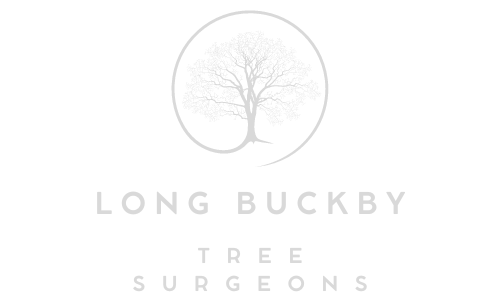What Happens if You Don’t Fell a Dangerous Tree in Time?
Introduction
Trees bring beauty, shade, and ecological value to our landscapes, but they also carry responsibility. When a tree becomes unstable or hazardous, delaying action can lead to serious—and sometimes irreversible—consequences. At Long Buckby Tree Surgeons, we regularly assist property owners across Long Buckby, Northamptonshire with assessing and removing dangerous trees before problems escalate.
In this article, we’ll explore what can happen if a dangerous tree is not felled in time. From safety risks to legal liabilities and property damage, ignoring the signs can cost more than just money. This guide aims to help you recognise the importance of timely intervention and understand the role of expert tree care.
Recognising a Dangerous Tree
Not all tree issues are immediately obvious. However, certain signs strongly indicate instability or decline.
Common Warning Signs
- Cracks or splits in the trunk or major limbs
- Dead or hanging branches
- Leaning posture, especially if it’s recent
- Root damage or heaving soil at the base
- Fungal growth near the base or along branches
- Bark decay or cavity formation
If your tree displays any of these symptoms, it’s essential to seek a professional assessment. Trees in poor health can deteriorate quickly, especially in adverse weather conditions.
What Are the Risks of Delaying Tree Felling?
Risk to People and Property
Unstable trees pose a direct risk to anyone nearby. If a branch—or the entire tree—fails, the results can be devastating.
Consequences May Include:
- Injury or fatality from falling limbs
- Damage to vehicles, roofs, and outbuildings
- Disruption to roads, footpaths, and power lines
- Obstruction of access routes during emergencies
This is especially critical in built-up or residential areas of Long Buckby where trees are often in close proximity to homes and public areas.
Legal and Financial Liabilities
In the UK, tree owners are legally responsible for the safety of trees on their land. Failing to act when a tree is known to be dangerous can lead to serious repercussions.
- Civil liability for injury or damage
- Invalidated insurance claims
- Potential fines if neglect is proven
- Enforcement notices from the local authority
By not acting promptly, you may be held accountable for consequences that could have been prevented with timely intervention.
Escalation of Tree Decay
A tree suffering from disease, structural issues, or pest infestation will typically worsen over time.
- Weak branches become brittle and fall
- Fungal decay can spread internally
- Structural integrity is progressively lost
- More extensive felling work may be required later
Early action is often less invasive, more cost-effective, and poses fewer risks to nearby structures.
When Should a Tree Be Felled?
Situations That Call for Immediate Felling
Certain scenarios call for immediate action to avoid imminent danger.
- Tree is partially uprooted or visibly unstable
- Major branches have fallen after a storm
- Tree is dying or dead with no viable recovery
- Located close to public areas, roads, or homes
At Long Buckby Tree Surgeons, we carry out prompt risk assessments and can prioritise urgent tree removals to safeguard people and property in the area.
Professional Assessment Is Key
Before taking action, it’s crucial to have the tree professionally assessed. Our team considers:
- Tree species and natural lifespan
- Severity of damage or decay
- Potential for recovery or pruning
- Impact on surrounding vegetation and infrastructure
A tailored approach ensures that felling is done only when truly necessary and with minimal disruption.
Preventative Maintenance Reduces Risk
Routine Inspections
Regular tree inspections are one of the best ways to identify potential hazards early.
- Detect minor issues before they become serious
- Keep trees healthy and structurally sound
- Maintain compliance with legal responsibilities
We recommend an annual assessment, especially for mature trees or those near buildings.
Strategic Pruning and Care
Not all dangerous trees need to be felled immediately. In many cases, proactive care can extend the life and safety of a tree.
- Crown reduction to reduce wind resistance
- Removal of dead or weak branches
- Soil and root management to improve stability
These techniques are often enough to prevent risk while preserving the tree’s value.
Conclusion
Leaving a dangerous tree untreated is a gamble that can result in serious injury, structural damage, and legal consequences. What might seem like a minor issue today can escalate rapidly, particularly during high winds or heavy rainfall. Timely felling—or at the very least, a professional assessment—can help avoid emergencies and reduce long-term costs.
At Long Buckby Tree Surgeons, we serve the Long Buckby, Northamptonshire area with expert advice, inspections, and safe tree felling services. If you suspect a tree on your property may be dangerous, don’t delay—get in touch with our team to assess the risk and take the right course of action.
Call us on: 01327 225 193
Click here to find out more about Long Buckby Tree Surgeons
Click here to complete our contact form and see how we can help with your tree needs.

